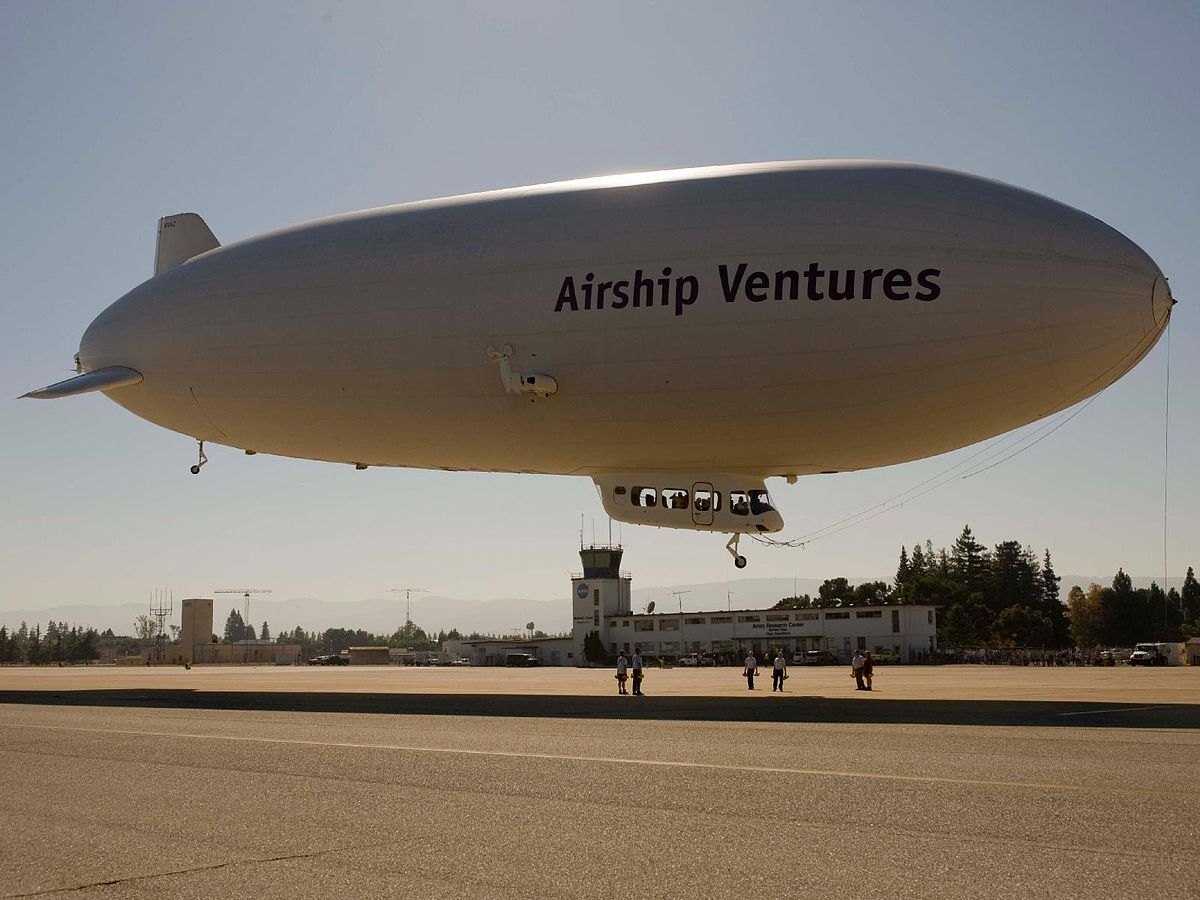Hummm.....
Posted for fair use.....
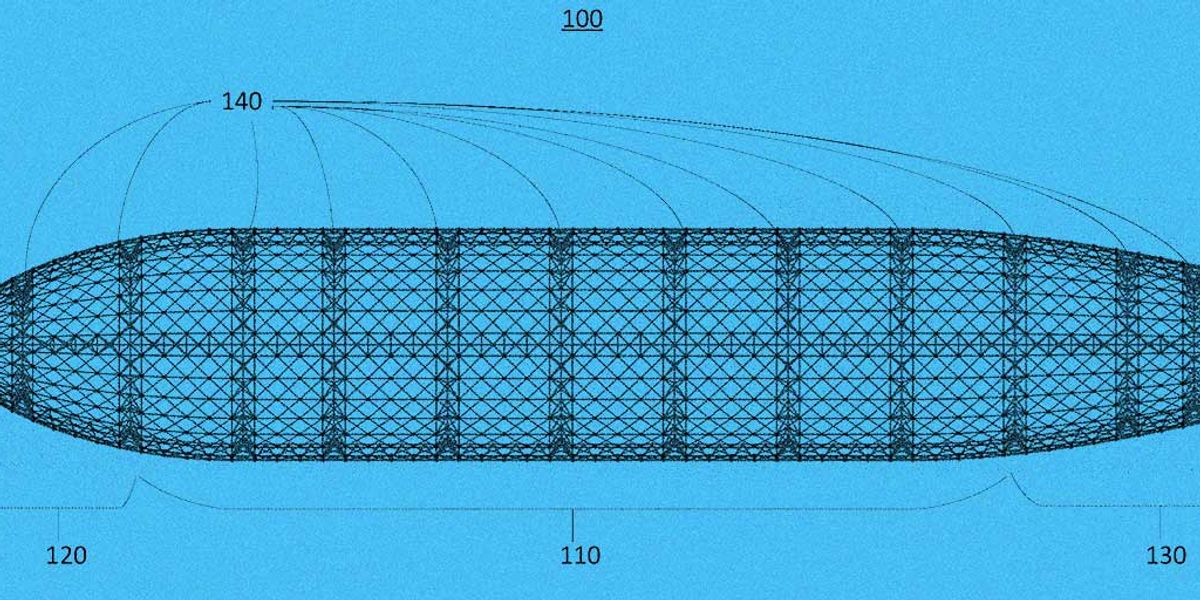
 spectrum.ieee.org
spectrum.ieee.org
29 Jul 2020 | 21:27 GMT
Sergey Brin's Revolutionary $19 Airship
Brin’s humanitarian airship company LTA is trying to reinvent airships for the 21st century
By Mark Harris
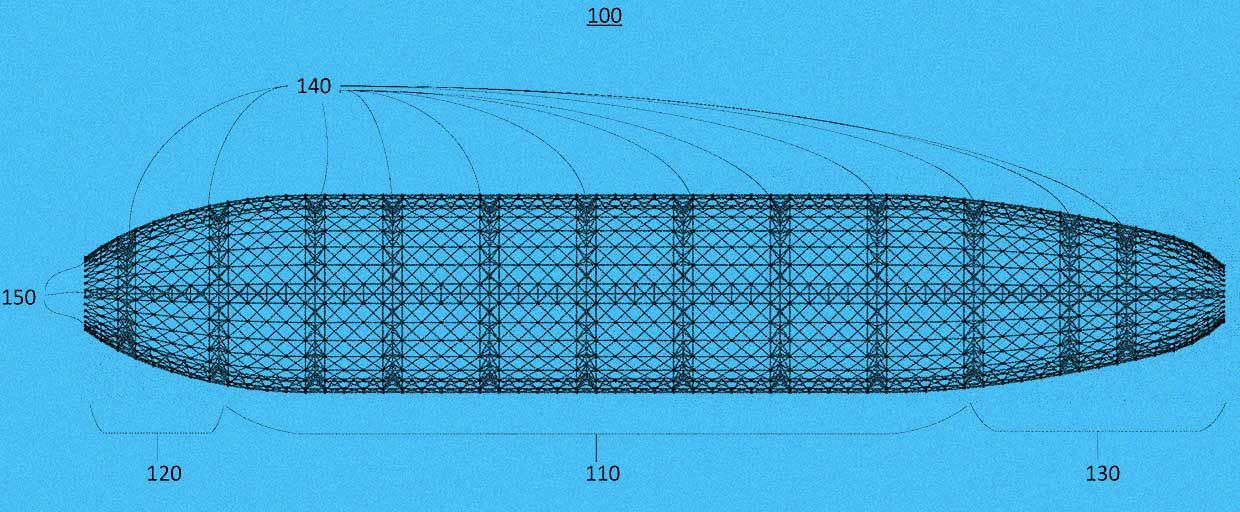 Image: LTA Research and ExplorationImage from LTA patent showing a large airship frame.
Image: LTA Research and ExplorationImage from LTA patent showing a large airship frame.
Advertisement
Editor's Picks
Solar Storms May Have Hindered SOS During Historic “Red Tent” Expedition
No Propeller? No Problem. This Blimp Flies on Buoyancy Alone
Airships for the 21st Century
In March last year, Google co-founder Sergey Brin finally saw a return on the millions he has invested in a quest to build the world’s largest and greenest airship for humanitarian missions. After six years of development, his secretive airship company, LTA Research and Exploration, quietly made its first sale: an a 18-metre long, 12-engined, all-electric aircraft called Airship 3.0. The price? According to an FAA filing obtained by IEEE Spectrum, it was just $18.70.
This was not an effort by Brin to cash out his airship investment, but a key part of its development process. The FAA records show that the buyer of Airship 3.0 was Nicholas Garafolo, an associate professor in the Mechanical Engineering department at the University of Akron in Ohio.
When not working at the university, Garafolo leads LTA’s Akron research team, which includes undergraduates, graduate students and a number of alumni from UA’s College of Engineering. The nominal purchase price is probably a nod to UA’s founding year: 1870.
Airship 3.0 is actually LTA Akron’s second prototype. The first, registered in September 2018, was also a 12-engined electric airship, but only 15 meters long, or a little longer than a typical American school bus. It has undergone flight tests in Akron. Akron was where the US Navy built gargantuan airships in the 1930s, and is still home to the largest active airship hangar in the world—which, according to emails obtained under a public records request, LTA is also interested in leasing.
But Brin doesn’t want to recreate the glory days of the past, he wants to surpass them. Patents, official records and job listings suggest that LTA’s new airship will be safer, smarter and much more environmentally sustainable than the wallowing and dangerous airships of yore.
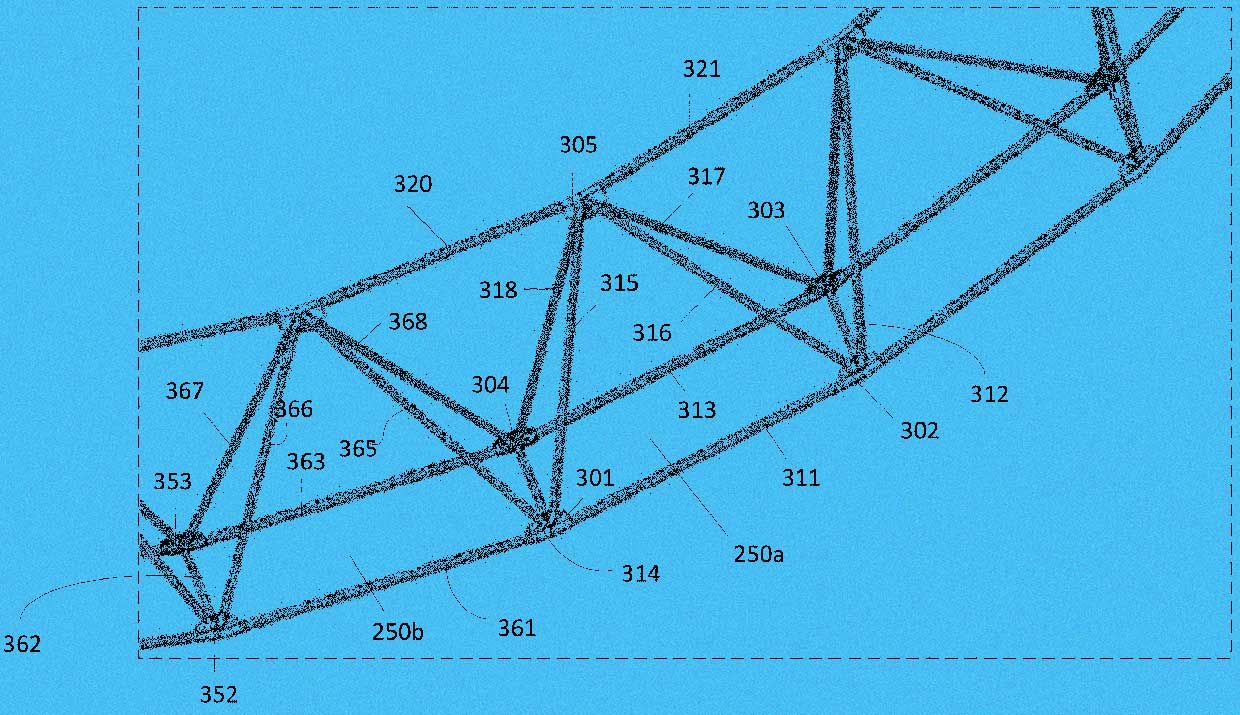 Image: LTA Research and Exploration The LTA patent illustrations include close-up details of the frame's modular construction.
Image: LTA Research and Exploration The LTA patent illustrations include close-up details of the frame's modular construction.
The biggest question in designing an airship is how to make it float. Hydrogen is cheap, plentiful and the lightest gas in the universe, but also extremely flammable and difficult to contain. Helium, the next lightest gas, is safely inert, but expensive and increasingly scarce. Virtually all new airships since the Hindenburg disaster have opted for helium as a lifting gas.
LTA’s airship, uniquely, will have both gases on board. Helium will be used to provide lift, while hydrogen will be used to power its electric engines. The lithium ion batteries used in today’s electric cars are too heavy for use in airships that LTA intends to deliver humanitarian aid to remote disasters. Instead, a hydrogen fuel cell will provide reliable power and could enable long range missions.
A patent application published last year shows that LTA is also rethinking how to manufacture very large airships. Traditionally, airships are kept stationary while their rigid frames, used to hold and shape the gas envelope, are being built. This requires workers to climb to great heights, adding risks and delays.
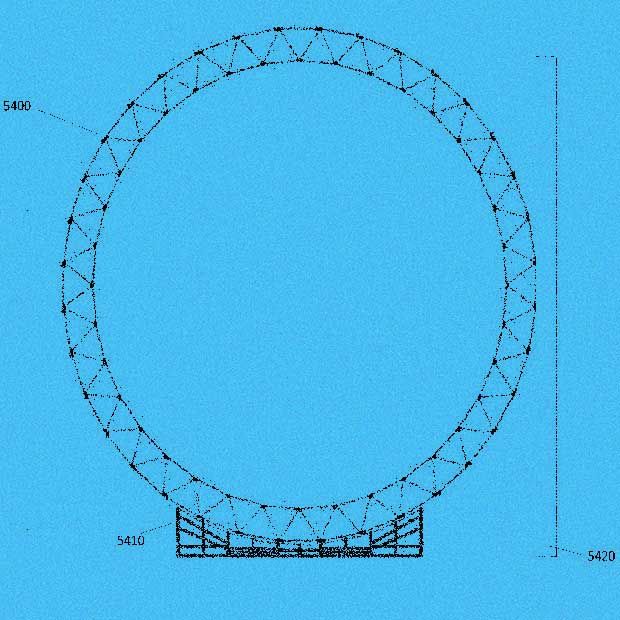 Image: LTA Research and Exploration
Image: LTA Research and Exploration
LTA’s patent covers a “rollercoaster” structure
Posted for fair use.....

Sergey Brin's Revolutionary $19 Airship
Brin’s humanitarian airship company LTA is trying to reinvent airships for the 21st century
 spectrum.ieee.org
spectrum.ieee.org
29 Jul 2020 | 21:27 GMT
Sergey Brin's Revolutionary $19 Airship
Brin’s humanitarian airship company LTA is trying to reinvent airships for the 21st century
By Mark Harris

Advertisement
Editor's Picks
Solar Storms May Have Hindered SOS During Historic “Red Tent” Expedition
No Propeller? No Problem. This Blimp Flies on Buoyancy Alone
Airships for the 21st Century
In March last year, Google co-founder Sergey Brin finally saw a return on the millions he has invested in a quest to build the world’s largest and greenest airship for humanitarian missions. After six years of development, his secretive airship company, LTA Research and Exploration, quietly made its first sale: an a 18-metre long, 12-engined, all-electric aircraft called Airship 3.0. The price? According to an FAA filing obtained by IEEE Spectrum, it was just $18.70.
This was not an effort by Brin to cash out his airship investment, but a key part of its development process. The FAA records show that the buyer of Airship 3.0 was Nicholas Garafolo, an associate professor in the Mechanical Engineering department at the University of Akron in Ohio.
When not working at the university, Garafolo leads LTA’s Akron research team, which includes undergraduates, graduate students and a number of alumni from UA’s College of Engineering. The nominal purchase price is probably a nod to UA’s founding year: 1870.
Airship 3.0 is actually LTA Akron’s second prototype. The first, registered in September 2018, was also a 12-engined electric airship, but only 15 meters long, or a little longer than a typical American school bus. It has undergone flight tests in Akron. Akron was where the US Navy built gargantuan airships in the 1930s, and is still home to the largest active airship hangar in the world—which, according to emails obtained under a public records request, LTA is also interested in leasing.
But Brin doesn’t want to recreate the glory days of the past, he wants to surpass them. Patents, official records and job listings suggest that LTA’s new airship will be safer, smarter and much more environmentally sustainable than the wallowing and dangerous airships of yore.

The biggest question in designing an airship is how to make it float. Hydrogen is cheap, plentiful and the lightest gas in the universe, but also extremely flammable and difficult to contain. Helium, the next lightest gas, is safely inert, but expensive and increasingly scarce. Virtually all new airships since the Hindenburg disaster have opted for helium as a lifting gas.
LTA’s airship, uniquely, will have both gases on board. Helium will be used to provide lift, while hydrogen will be used to power its electric engines. The lithium ion batteries used in today’s electric cars are too heavy for use in airships that LTA intends to deliver humanitarian aid to remote disasters. Instead, a hydrogen fuel cell will provide reliable power and could enable long range missions.
A patent application published last year shows that LTA is also rethinking how to manufacture very large airships. Traditionally, airships are kept stationary while their rigid frames, used to hold and shape the gas envelope, are being built. This requires workers to climb to great heights, adding risks and delays.

LTA’s patent covers a “rollercoaster” structure
that allows a partially completed airship to be rotated around its central axis during construction, so that workers can stay safely on the ground. The patent application also describes a method for 3D printing airship components out of strong, lightweight carbon fiber.
LTA’s website says that it is working to create a family of aircraft with no operational carbon footprint to “substantially reduce the total global carbon footprint of aviation.” That would require both generating hydrogen using renewable electricity, and producing a variety of aircraft to satisfy passenger as well as cargo demand.
Paperwork filed by LTA suggests that its first full-size airship, called Pathfinder 1, could already be almost ready to take to the air from LTA’s headquarters at Moffett Field in Silicon Valley. FAA records show that the Pathfinder is powered by 12 electric motors and able to carry 14 people. That would make it about the same size as the only passenger airship operating today, the Zeppelin NT, which conducts sightseeing tours in Germany and Switzerland.
In fact, LTA’s first airship could even be based on the Zeppelin NT, modified to use electric propulsion. LTA has received numerous imports from Zeppelin over the last few years, including fins, rudders, and equipment for a passenger gondola.
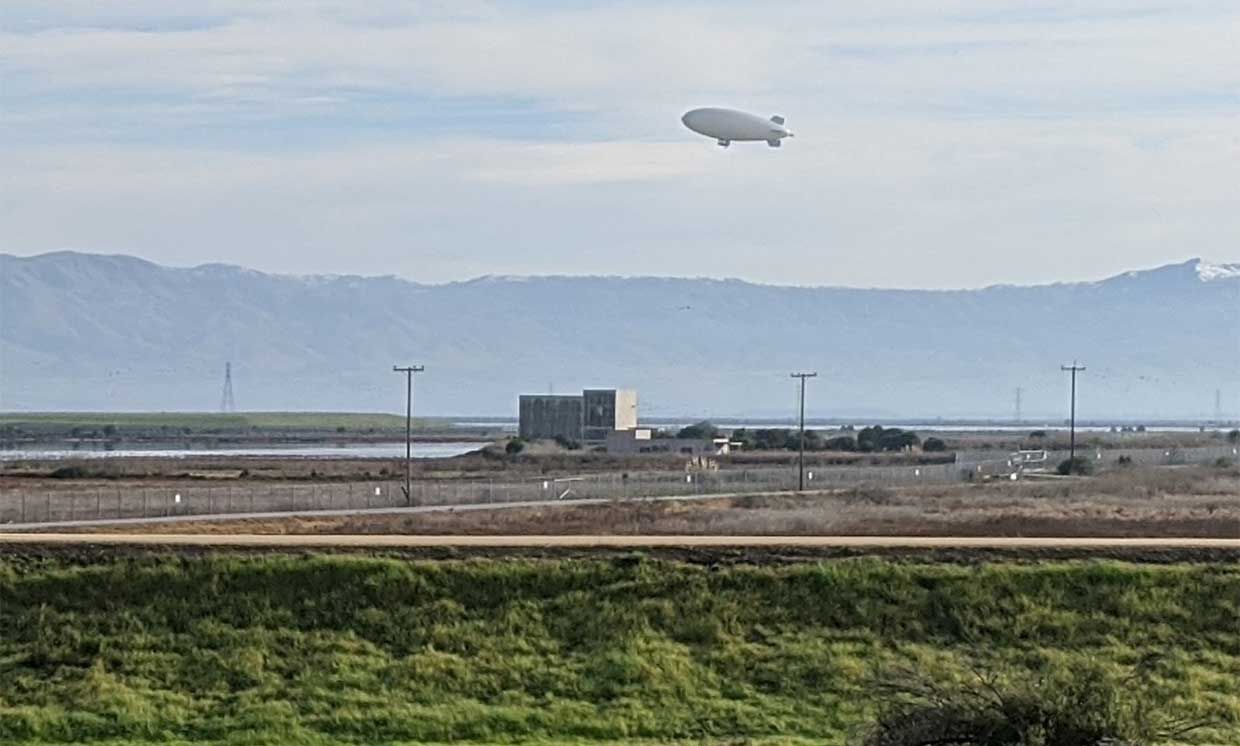 In January, LTA flew an older airship usually used for advertising at Moffett Field, likely testing flight systems.
In January, LTA flew an older airship usually used for advertising at Moffett Field, likely testing flight systems.
Unlike experimental fixed-wing or VTOL aircraft, which can be quietly tested and flown from remote airfields, there will be no keeping the enormous Pathfinder 1 secret when it finally leaves its hangar at Moffett Field. In January, LTA flew a small unmarked airship, usually operated for aerial advertising, from there. Even the sight of that airship, probably for a test of LTA’s flight systems, got observers chattering. The unveiling of Pathfinder 1 will show once and for all that Sergey Brin’s dreams of an airship renaissance are anything but hot air.
LTA’s website says that it is working to create a family of aircraft with no operational carbon footprint to “substantially reduce the total global carbon footprint of aviation.” That would require both generating hydrogen using renewable electricity, and producing a variety of aircraft to satisfy passenger as well as cargo demand.
Paperwork filed by LTA suggests that its first full-size airship, called Pathfinder 1, could already be almost ready to take to the air from LTA’s headquarters at Moffett Field in Silicon Valley. FAA records show that the Pathfinder is powered by 12 electric motors and able to carry 14 people. That would make it about the same size as the only passenger airship operating today, the Zeppelin NT, which conducts sightseeing tours in Germany and Switzerland.
In fact, LTA’s first airship could even be based on the Zeppelin NT, modified to use electric propulsion. LTA has received numerous imports from Zeppelin over the last few years, including fins, rudders, and equipment for a passenger gondola.

Unlike experimental fixed-wing or VTOL aircraft, which can be quietly tested and flown from remote airfields, there will be no keeping the enormous Pathfinder 1 secret when it finally leaves its hangar at Moffett Field. In January, LTA flew a small unmarked airship, usually operated for aerial advertising, from there. Even the sight of that airship, probably for a test of LTA’s flight systems, got observers chattering. The unveiling of Pathfinder 1 will show once and for all that Sergey Brin’s dreams of an airship renaissance are anything but hot air.

